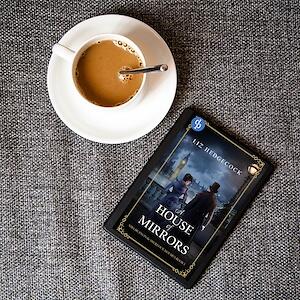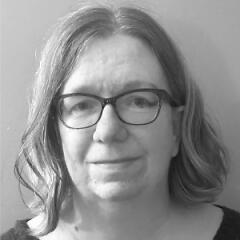What is your book A House of Mirrors about?
A House of Mirrors is my version of how Holmes, Watson and Mrs Hudson came to be at 221B Baker Street, and Sherlock Holmes’s first big case – presented from Mrs Hudson’s point of view rather than Dr Watson’s!
What inspired you to put a new spin on the detective classic?
I grew up when Jeremy Brett was Sherlock Holmes on the TV, which was a very traditional presentation of Holmes and Watson. As an adult, I was rereading A Study in Scarlet, the first Holmes story, and realised that Holmes and Watson lead charmed lives. They run about solving mysteries and never have to think about who’s cooking supper, whether there’s enough bread and where the next pair of clean socks will come from. All that is taken care of by Mrs Hudson, who in return barely gets a mention. I decided it was time for her to have a voice and a mystery of her own, and a purpose beyond looking after two overgrown boys.
How did you create the character of Mrs. Hudson?
I knew the basics about Nell Hudson – her real name, that she was in her late twenties, that she had been married and her husband had disappeared, and that she was clever. The rest I learned as I wrote her story – particularly the opportunities that were closed to her as a woman.
How would you describe your Sherlock Holmes and how is he different from the classic version?
‘My’ Sherlock Holmes is younger than the classic version: he’s twenty-six at the time of A House of Mirrors. He’s beginning to build up his business as a consulting detective, and he doesn’t have the almost unshakeable confidence of the classic Holmes. He also understands that he needs to be something of a showman, which embarrasses him a little. But perhaps the main difference is that he is more interested in people. He wants to know what makes Nell tick. I decided early on that I would regard the classic version as Dr Watson’s interpretation of Holmes – what he wanted to present, rather than the only possible version.
How do you get into the writing zone? Do you have any rituals?
A few years ago, I moved from writing first drafts at the computer to dictating them on walks. That means that when I start a writing session, my first job is to write a chapter summary on a Post-it note and make sure my phone is charged. Then I head out and walk a loop of about 3 miles while I talk into the phone, which converts speech to text. When I finish the walk I have a draft of about 2000 words. I email that to myself, then have a cup of tea and do a light edit on it when I get home.
What did the research for this novel look like?
There was plenty of research! I skulked on Google Street View looking at Baker Street and various other locations to make sure I got the routes right, and also things like where the kitchen would be and how many floors the house would have. I was lucky enough to do some research in the Liddell Hart fashion and costume archives at Liverpool John Moores University. I read digitised newspapers from the period. I also checked things such as exactly what a cab would look like, employment law regarding women, what foods were in season, what London Zoo was called in the 1880s, what a policeman would have carried (they had rattles rather than whistles at that point)…
What makes a good crime novel?
I like crime stories where the protagonist grows during the story, and where I care about the characters. I think it’s very important that the reader has a chance to solve the case too – it’s really annoying when the detective brings out new information that we haven’t seen!
Do you have any book recommendations for us?
Of course! I’m going to pick two classics and two comparatively new books. The classics are The Murder of Roger Ackroyd by Agatha Christie and Brat Farrar by Josephine Tey. The new books are In the Blink of an Eye by Jo Callaghan and The Wrong Sort to Die by Paula Harmon.
In the Blink of an Eye is a fascinating read where a police officer returning to work has to team up with an AI assistant. The Wrong Sort to Die is set during the run-up to WWI and is the first in the Margaret Demeray series, in which a female pathologist becomes tangled up in espionage while trying to fight her corner in a man’s world.


